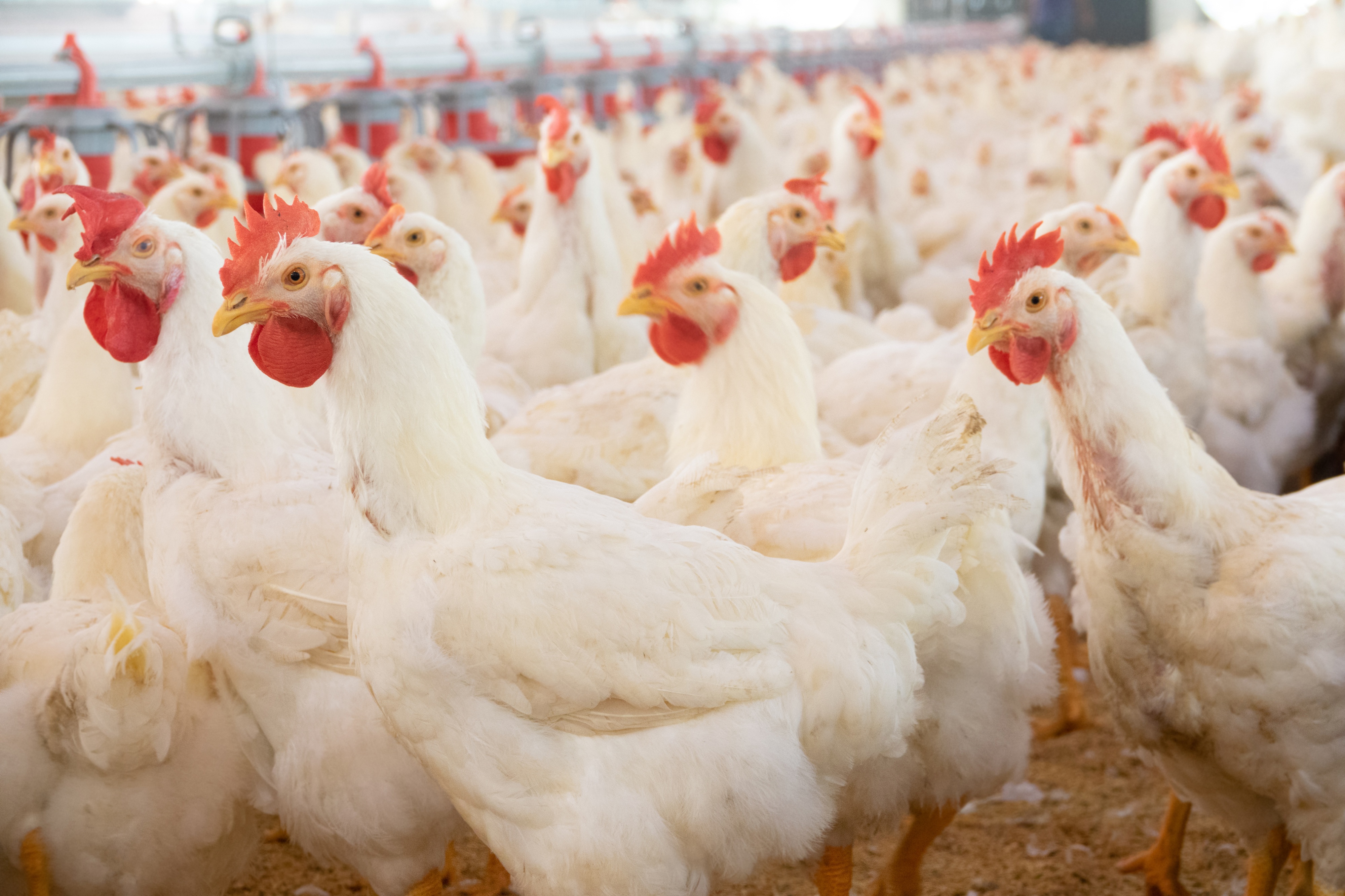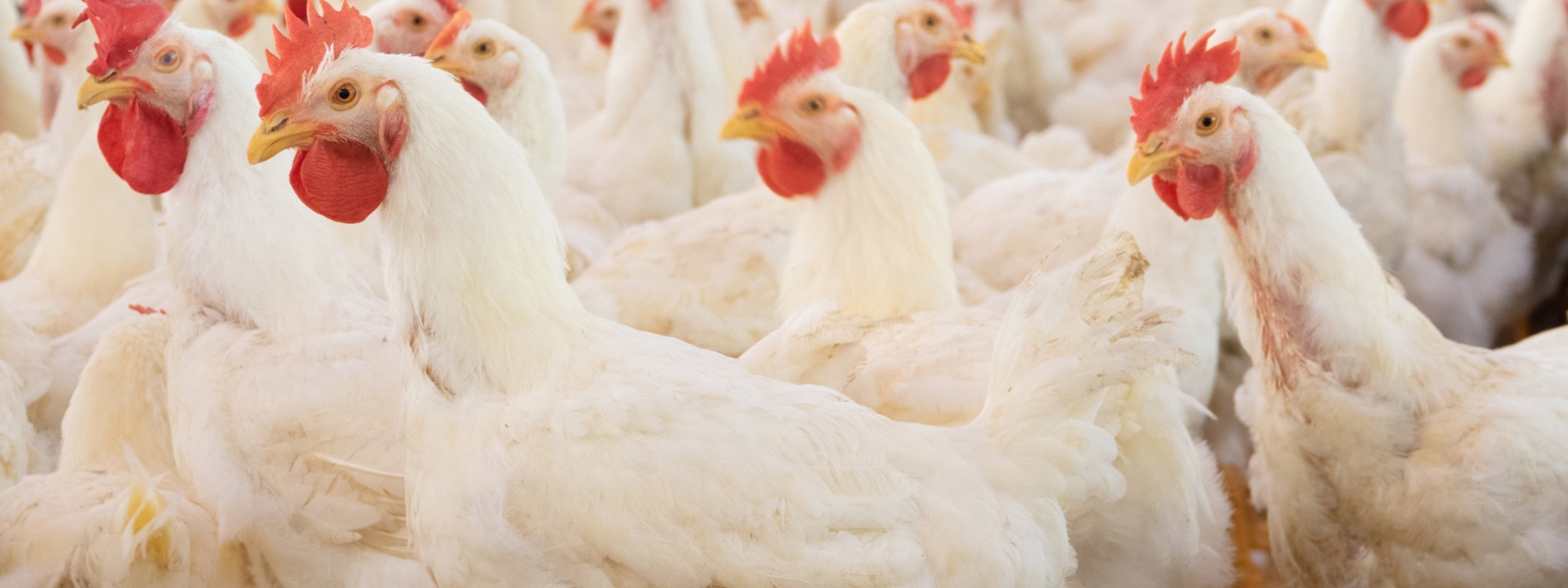Farm flock losses climb as avian flu outbreak spreads

Until recently, California poultry farms were largely immune from the impacts of the avian influenza virus, which severely impacted farms in states such as Iowa, America’s largest egg producer. But recent outbreaks at commercial poultry farms in Merced and Sonoma counties have stoked fears of a worsening spread in the Golden State.

By Ching Lee
Despite on-farm biosecurity efforts to protect the state’s poultry flocks, outbreaks of a highly contagious strain of avian influenza have spiked markedly this winter, leading to the destruction of millions of birds to try to contain the deadly virus.
Mounting losses from the disease have devastated impacted farms, which are required to euthanize entire flocks to prevent spread. Since the H5N1 virus first surfaced in the U.S. in 2022, nearly 80 million birds across the nation have been destroyed, driving up prices of eggs, chicken and turkeys as production plummeted.
But until last fall, the disease appeared to have left California poultry farms relatively unscathed compared to farms in states such as Iowa, the nation’s largest egg producer and where nearly 19 million birds have been wiped out since 2022 due to AI. The first year of the outbreak, California bird losses totaled 751,680. The number jumped to more than 4.7 million in 2023, with most of the cases occurring since October, according to the U.S. Department of Agriculture.
“This year, it’s just a different story, and we’re very concerned about it,” said Bill Mattos, president of the California Poultry Federation.
Commercial poultry farms in Merced and Sonoma counties, which did not record any cases in 2022, have been hit particularly hard this time, with more than 3.78 million birds destroyed so far between the two regions.
“We’re still trying to put out a wildfire here,” said Scott Weber, an owner of Petaluma-based Sunrise Farms. The Sonoma County egg producer has been grappling with impacts of the virus since late November, having been forced to euthanize all its birds.
Weber said the farm has tried to keep all employees working during the cleanup process, which he expects will continue for months. But with production at a standstill, he acknowledged the farm may need to lay off some of its workforce, even though “we’re trying our best not to do that.”
He said it remains unclear how the farm contracted the virus, noting “we’ve done everything we can” to keep it out.
Avian influenza is introduced primarily by wild birds such as waterfowl and shorebirds, which can carry the virus but not appear sick. Infected birds shed the virus into the environment through their feces and secretions. Domestic poultry can catch AI directly from infected birds or indirectly through contaminated water, feed, clothing and equipment.
First identified in Europe in 2020, the H5N1 strain of the virus has circled the globe with outbreaks in 67 countries on five continents. In the U.S., the disease ripped through some of the largest poultry farms in the Midwest and East Coast, sending egg prices to record levels in 2022 and early 2023.
To protect commercial flocks, State Veterinarian Annette Jones has asked producers to keep their poultry indoors through June, including certified organic layers and meat birds that are required by law to have outdoor access.
Sonoma County egg farmer Tiffany Holbrook, whose birds are raised on pasture, said she will not be moving her chickens indoors, though she continues to practice strict biosecurity. That includes not allowing people onto the pasture and changing her boots and clothes whenever she goes out there.
She said she recognizes her farm remains susceptible to AI, as infected birds could land on the farm’s chicken coop or eat from her birds’ feeder, passing the disease to her flock. “I just stay vigilant as much as possible,” Holbrook said.
Jones said most of the farms impacted by the current outbreak have been “very biosecure.” Still, the disease has been “popping up like popcorn around the state.” With California’s last confirmed AI finding as recent as Dec. 28 in Marin and Sonoma counties, the state remains focused on controlling spread and eliminating the virus, she said. State epidemiologists will work to better understand the outbreak in the coming months. It remains unclear if the virus itself has become more virulent, if it is more prevalent in the environment or if there were breaks in farm biosecurity.
“We hope to find the answer with more study,” Jones said. “But sometimes we never get the answer to that important question: Was it bad luck or is there something that can be fixed to prevent future introductions of virus?”
Weber of Sunrise Farms expressed frustration that even though a new vaccine for AI is available, poultry producers do not have access to it. The vaccine is being used in a trial on the California condor to protect the endangered bird. Weber said his farm already vaccinates its birds for other diseases and that vaccinating for AI would be “a better solution than trying to fight an invisible wildfire.”
Jones said use of the AI vaccine, which is regulated by USDA, remains “complicated,” though there are “very active national discussions on the topic, and influenza control experts continue to look at indications for use.” Mattos of the poultry federation noted most countries ban poultry vaccinated for AI.
Maurice Pitesky, a poultry specialist and expert in highly pathogenic avian influenza at the University of California, Davis, said vaccines are likely part of the solution, but they’re not a panacea. He said not allowing the AI vaccine for poultry appears to be more of a political decision than one based on science. “This is an example of where the science is ahead of the policy and economics,” he said.
With millions of waterfowl arriving in California each fall during migration season, Pitesky said it’s clear poultry farmers need to do more than what they’ve done for years. He said biosecurity methods alone—including fencing, foot baths, vehicle washes and employee training—have not been sufficient to keep out AI.
“The reality is, if you have high waterfowl abundance around your farm and there’s AI in those waterfowl, there’s just no way that that physical operational barrier is good enough to prevent exposure and infection,” he said. “We need to think outside the barn.”
Pitesky is trying to get more farmers to also use prediction tools such as the Waterfowl Alert Network, a software subscription service that gives daily notifications to producers when waterfowl are close to their farms. Having this information, he said, would allow farmers to be more strategic about their biosecurity.
He compared the tool to weather forecasting that tells farmers when a storm is coming. If farmers know where high numbers of waterfowl are roosting, for example, they could deploy water cannons or blasters or change the habitat around the farm to push birds away.
Mattos said the poultry federation has helped Pitesky apply for a USDA grant that would allow the tool to be offered to producers on a pilot basis. Pitesky said his hope is for these types of technologies to be subsidized completely by the government to encourage producers and other stakeholders to start using them.
“We’re dealing with an existential issue for the commercial poultry industry, not just in the U.S. but globally,” Pitesky said. “(Poultry) is our primary source of animal protein, and we’re losing millions of birds a year if we keep on continuing down the same path.”
(Ching Lee is an assistant editor of Ag Alert. She may be contacted at clee@cfbf.com.)




